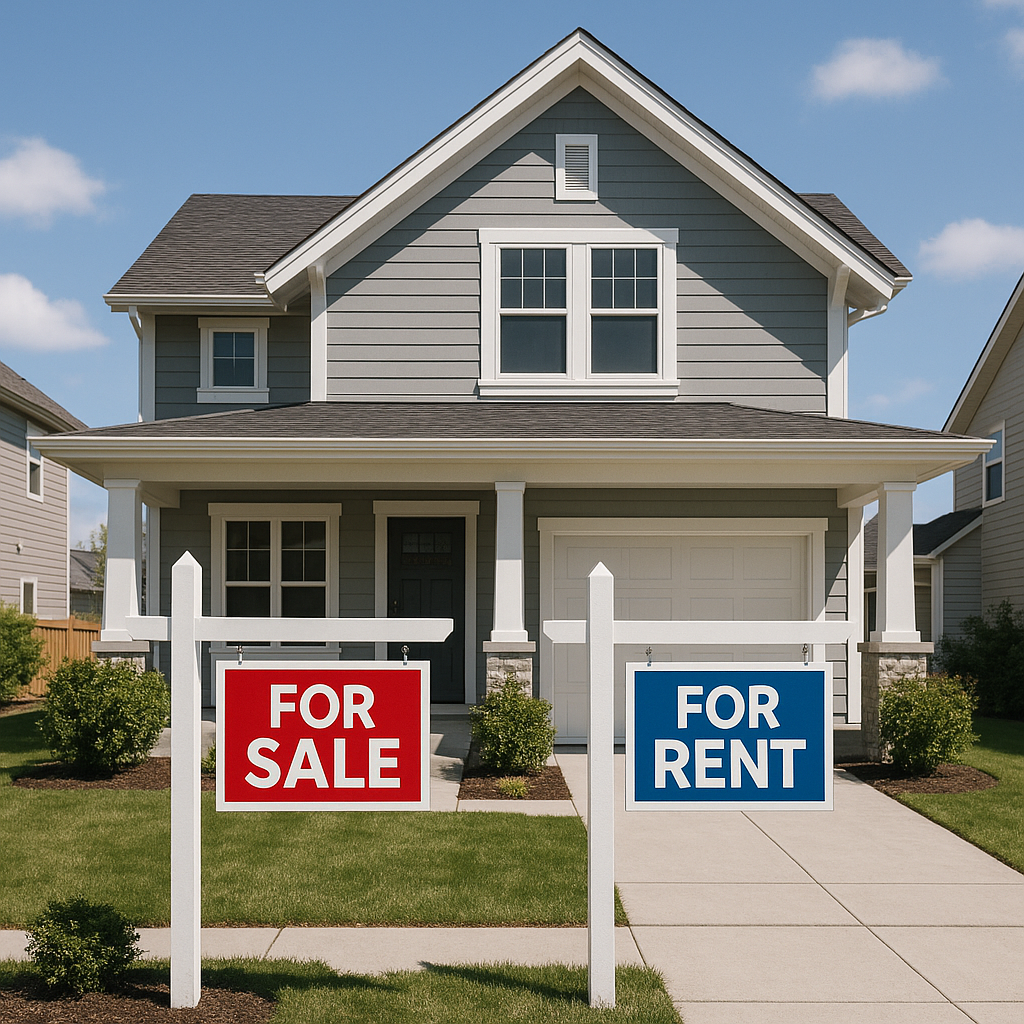
When the “For Sale” Sign Becomes a “For Rent” Sign
A new report from Parcl Labs lays out a trend that some of us on the ground have seen firsthand: a growing number of “accidental landlords” popping up in markets where the big investors are most entrenched—and pulling back.
According to Parcl Labs, institutional investors—those with 1,000+ single-family rentals—are heavily concentrated in just six metro areas: Atlanta, Phoenix, Dallas, Houston, Tampa, and Charlotte. These markets account for over a third of all institutional holdings nationwide. But they also top the charts for rising inventory and softening demand. That’s a bad mix if you’re holding a lot of homes and banking on appreciation or fast sales.
Take Houston, where inventory is up 26.7% year-over-year and homebuyer demand has dropped nearly 14%. In response, some would-be sellers are shifting strategy. The report highlights a sharp rise in homes that failed to sell and were quickly converted to rentals. In Houston alone, 6.8% of listings that didn’t sell in April became rentals—up 41% from last year. Dallas followed closely behind at 5.1%, up 32.3% .
This creates a unique kind of competition. These accidental landlords aren’t following the same playbook as the institutions—they’re often just trying to cover costs. That’s led to downward rent pressure in places where big investors had hoped to see rental growth. In other words, in markets the Wall Street landlords thought they had figured out, mom-and-pop operators who never wanted to be landlords in the first place are now crowding the field.
So what are the big guys doing? Selling. Between March 2024 and April 2025, institutional investors sold more homes than they bought, with 76.7% of that net selling concentrated in just those six markets. Dallas, Atlanta, and Houston led the retreat .
Where does this leave us? If you’re a smaller investor or homeowner in one of these markets, watch for new rental competition—and potentially, new buying opportunities. As Parcl Labs notes, these accidental landlords could become motivated sellers themselves if they tire of being in the rental game.
This report is a good reminder that real estate—especially in these fast-growing Sunbelt metros—is a cycle. And right now, some of the biggest players in the game are trying to reshuffle their cards.
Chart 3: Houston Metro Accidental Landlord Rate (January 2023 – April 2025)

Dallas follows at 5.1 %, a 32.3 % YoY jump.
Chart 4: Dallas Metro Accidental Landlord Rate (January 2023 – April 2025)

Phoenix and Tampa post double‑digit growth but lower absolute shares.
Chart 5: Tampa Metro Accidental Landlord Rate (January 2023 – April 2025)

Chart 6: Phoenix Metro Accidental Landlord Rate (January 2023 – April 2025)

Atlanta shows modest YoY expansion.
Chart 7: Atlanta Metro Accidental Landlord Rate (January 2023 – April 2025)

Charlotte presents the sole exception, with accidental landlord rates declining 7.2% year-over-year to 2.0%.
Chart 8: Charlotte Metro Accidental Landlord Rate (January 2023 – April 2025)

